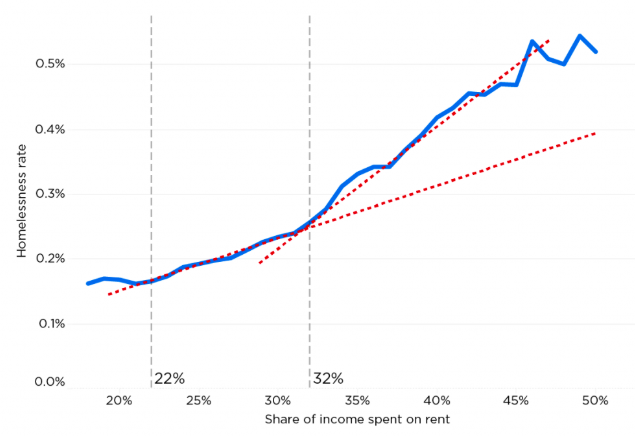As more and more Americans become rent burdened, the homeless rates in the nation’s most unaffordable markets continue to grow, according to the latest data from Zillow.
According to the company, a renter earning the median U.S. income of $61,240 and renting the median-priced apartment of $1,442 is expected to spend about 28% of their income on rent, increasing from the historical norm of 26%.
(Image courtesy of Zillow, click to enlarge)
Notably, when the rent burden increases by 2 percentage points, Zillow points out that about 1,500 more people are driven to homelessness.
Zillow gathered this data in collaboration with researchers at the University of New Hampshire, Boston University School of Social Work and the University of Pennsylvania. The data reveals that the effects of a larger rent burden are “more extreme” in markets where renters are already spending more than 32% of their income.
Zillow Director of Economic Research and Outreach Skylar Olsen said although the nation’s homelessness rate has fallen, some communities still grapple with affordability.
“It's undoubtedly good news that the overall level of homelessness has fallen nationwide, even as housing costs have increased,” Olsen said. “But that zoomed-out view obscures some very real, local tensions between housing affordability and homelessness, and ignores the reality that success in tackling homelessness in one community doesn't necessarily have the same effect in another.”
Zillow notes that in 100 of the 386 markets observed, rent burden already exceeds the 32% threshold. In these areas, the median market rate rent consumes 62.9% of the area's median household income.
These communities are also defined by high rates of homelessness, unaffordable housing and high rates of extreme poverty. Notably, this cluster is home to 15.1% of the total U.S. population but hosts a whopping 47.3% of the nation's homeless population.
"This first-of-its-kind research both quantifies the true scale of the problem and reinforces the idea that every community has its own unique challenges,” Olsen said. “But there are similarities that can be identified, even among communities of wildly varying sizes and locations, and learnings to be shared."
You can read more about the report here.








